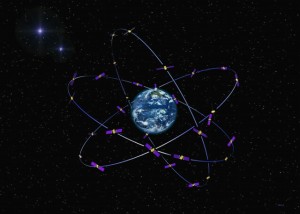Souce ESA: Galileo will use the most accurate atomic clock in space to provide the most accurate positioning services. In fact time is the key for satellite navigation systems. The launch of the first pair of Galileo satellites, set for October 20, will open the road for Europe’s satellite navigation programme. Another In-orbit Validation pair will be lofted next year and the full constellation will become fully operational with a constellation of 30 spacecraft. Their technologies have already been demonstrated with two precursor satellites GIOVE-A & B. At the heart of each Galileo satellite are four atomic clocks which will ensure that users on Earth to know their position to within a metre. These ultra-precise clocks will all beat in rhythm, rigorously synchronized with the ground network of control stations. That is why Galileo has been described as “one vast space clock”.
This video explains how the Galileo system will work, with ivid animation showing in 3D how the system will operate.


















































































































![A trajectory analysis that used a computational fluid dynamics approach to determine the likely position and velocity histories of the foam (Credits: NASA Ref [1] p61).](https://www.spacesafetymagazine.com/wp-content/uploads/2014/05/fluid-dynamics-trajectory-analysis-50x50.jpg)



Leave a Reply